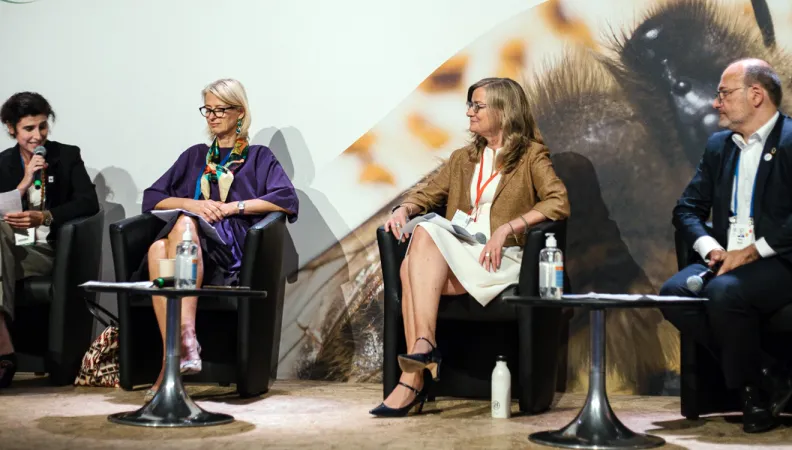Share the page
How Public Development Banks can Support Biodiversity
Published on

Despite the decline in biodiversity around the natural world, solutions can be found in unexpected places. Public Development Banks can play a major role in mobilizing the finance necessary to protect biodiversity, as was highlighted at the recent IUCN World Conservation Congress in Marseille.
“We are the bees and pollinators of the financial system”
The current biodiversity crisis is not only an environmental problem, but also an economic and societal challenge, said Rémy Rioux, AFD’s Chief Executive Officer and Chair of the International Development Finance Club (IDFC).
“Fortunately, it is possible to reconcile nature and the world of finance, which is also showing greater interest in it,” he told a panel at the IUCN Congress. And for good reason: a third of the assets of financial institutions depend on healthy ecosystems. “As Public Development Banks, we are the bees and pollinators of the financial system,” added Rioux. “We disseminate messages to the various actors and we find the appropriate financial instruments.”
The CEO of AFD says the world’s 500 Public Development Banks, which account for about 10% of global investments, are now eagerly awaited to promote green finance, and in particular the protection of biodiversity.
“We are willing to share the financial risks”
Christiane Laibach, Executive Board Member of the German development bank KfW, stressed the need to encourage the private sector to join Public Development Banks' efforts in shoring up biodiversity.
“To achieve this, it is essential for actors in international finance to share experiences and knowledge, which is also the case for innovation,” she said. “We are willing to share certain financial risks, it’s something the public sector can do to get the private sector involved.”
Building on $3 billion of support for some 400 projects that benefit global biodiversity, KfW changed its internal operating procedures several years ago in order to take greater account of biodiversity in its activities.
Further reading: The IUCN World Conservation Congress in 8 Points
“We feel it’s very important for people on the ground and partners to be central to our innovation processes,” said Christiane Laibach. “If you set up funds like the Legacy Landscape Fund, which establishes links between people, countries and investors, it works.”
“The richer the biodiversity is in a given area, the more those who live there are poor”
Gustavo Montezano echoed the idea that PDBs have a major role to play. The President of BNDES, the Brazilian development bank, argues they can take action on three levels: regulation, policies and action in communities.
“We see in Brazil that the richer the biodiversity is rich in a given area, the more the people living around it tend to be poor,” said Montezano. To address this incongruity, BNDES works with multinational companies such as Coca-Cola and Microsoft to change the “price signal”. The objective is to ensure that the services rendered by ecosystems benefit local communities. One thing is sure: “More biodiversity must go hand in hand with more wealth.”
“Replicate what has been done for the climate”
For example, Ingrid van Wees, Vice-President for Finance and Risk Management at the Asian Development Bank (ADB), said it involves providing support to countries who wish to create strategic, technical and legal frameworks that are favorable to biodiversity. Complex legal and economic structures are often necessary to launch or consolidate ambitious biodiversity projects, such as for the protection and restoration of wetlands used by migratory birds, for example.
“We need to move our activities in the right direction and this means that all the financial actors must speak the same language,” said Rémy Rioux. “The Taskforce on Nature-related Financial Disclosures, a working group involving public and private actors in the publication of nature-related risks in the financial sector, is an effective tool to achieve this.”
Menu latéral
$(document).ready(function() {
$('#most_viewed_nodes_block').replaceWith($('#mi'));
});
IUCN Series
3 Questions on the IUCN World Conservation Congress Lessons learned from the IUCN World Conservation Congress The IUCN World Conservation Congress in 8 Points France and AFD, Key Partners of IUCN Costa Rica and France's Southeast: A Partnership for Biodiversity at the World Conservation Congress One Planet Summit: Eight Months on, Progress on Biodiversity Main Menu
